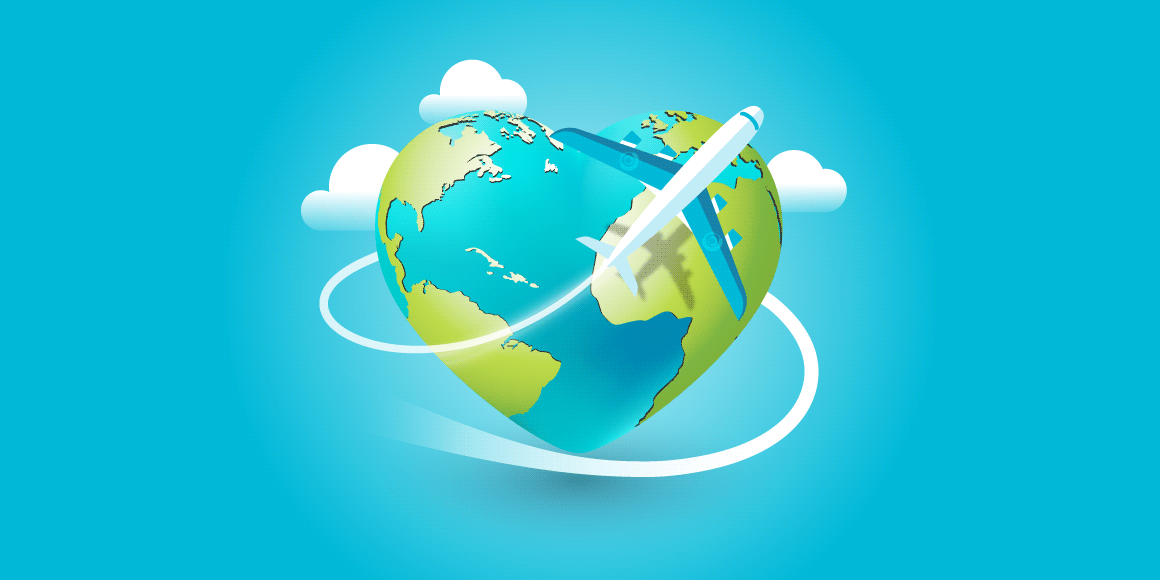For many companies seeking a competitive advantage, incentive trips that are part of sales incentive programs can tip the odds in their favor by boosting motivation and, ultimately, performance.
But don’t just take our word for it. Here are 7 reasons you should start implementing a sales incentive travel program for your sales team right now:
1. It builds loyalty.
The world of business is always evolving, growing, and shifting, but some things will never change. We all know it’s generally better and far more cost-effective to hold on to seasoned, committed employees than to go out looking for new ones. In fact, Gallup estimates that replacing individual employees can cost as much as twice the employee’s annual salary.
What’s more, having to onboard an inexperienced employee could be disruptive to your existing business operations, and introducing a new player to a team might run the risk of upsetting your office’s highly important company culture. So, if you agree that employee turnover can be expensive and onerous, what can you do if your current team is unmotivated?
What if they’re considering other options, but are looking for a reason to stay?
We talk a lot about how effective travel incentives are for building employee engagement and customer loyalty. But it can be just as powerful internally for an organization. Employee motivation and retention is important, and a successful incentive travel program may be your perfect solution for some of these issues.
By offering your most hardworking employees something they can’t buy in stores, something that they’ll look back on fondly years later, you’ll end up with a dedicated, team-oriented, and loyal sales force. They won’t see themselves merely as employees, but as members of a team with a real stake in the success of their company.
2. “Non-monetary” is good. “Experiential” is great.
For some people, working a job is about one thing and one thing only: the paycheck. They’re not invested in their job or their workplace, and the only rewards that will motivate these people are monetary. However, particularly in the last several years, work for many of us has become about more than just money. It’s where you’re spending half of your waking hours, after all, so ideally it should be enjoyable and fulfilling in its own right.
Increasingly, businesses are turning to non-monetary rewards to motivate their top employees, from golf clubs to kitchen appliances to electronics. But this has been taken a step further with the rise of “intangible” or “experiential” rewards, non-monetary rewards that come in the form of unforgettable experiences. Things like backstage passes to a Broadway show, tickets to a baseball game with seats just behind home plate, and—of course— travel opportunities.
Experiential rewards like a trip to the Caribbean don’t just create lasting memories—they create a positive association with your brand and your company. This is especially true when you can add soft benefits or a rewarding Corporate Social Responsibility (CSR) initiative—two experiences we’ve found to be highly motivating when included in incentive trips. These types of events, and the associations they create with your brand, are invaluable to have in markets that are becoming commoditized and featuring less and less differentiation.
The unquantifiable, but very positive, results that are generated from giving your employees unforgettable experiences like this are a great way to produce what we in the corporate incentive world call ROE: Return On Experience. Creating a positive brand presence, even internally, will lead to ripple effects elsewhere: your team won’t just perform better, they’ll also become stronger advocates for your brand and leading them to sell better, too.
3. Sales incentives give you a competitive edge in the labor market.
Here’s an issue we’ve been noticing recently across certain industries: labor shortages. Distributors in particular have had issues with vacant positions as the former largest generation in history, the Baby Boomers, head into retirement without a sufficient supply of Millennials or Gen Z-ers interested in filling the gaps.
This is where creating that positive brand presence comes in again. Younger generations aren’t simply looking for a paycheck: they’re looking for a company that aligns with their values and fosters positive, mutually beneficial relationships. They actively seek out companies that focus on the ROE.
An easy example we can point to is Google, whose famously laid-back workplace culture has become a motivational tool that has drawn millions of new applicants over the years.
But you don’t have to be a tech giant to take advantage of their strategies: millennials and Gen-Zers also love to travel more than previous generations and are more likely to prioritize travel or other bucket-list experiences in their time off. A sales incentive program that features a travel incentive is a built-in opportunity for them to achieve some of their dreams. Offering something they really value and will work hard to achieve will give you a competitive boost in a saturated labor market. You won’t just get more applicants—you’ll get better ones too.
4. Competition drives performance.
We can all admit it: competition is fun. That’s why we play games. By now you should be pretty familiar with the term “gamification”—but we can’t emphasize enough how effective it is as a motivational tool.
Every successful incentive program doesn't need to be about competitions, but it’s a strategy many go for: fostering a sense of friendly competition drives engagement in a program, and engagement drives business performance. Everybody wants to win, whether the game is for an unforgettable experience—like an all-expenses-paid trip to somewhere amazing—or for something as simple as bragging rights.
But you can make your program be about more than just the winner at the end: the process can be fun too. With leaderboards, sweepstakes, and short-term promotions along the way, a program with a travel incentive as the pot of gold at the end of the rainbow can keep everyone engaged until the end.
5. Have we mentioned enablement yet?
We love all things eLearning and enablement. Usually we discuss these topics in the context of channels, i.e., how to turn your channel partners into experts and advocates for your product. For example, an enablement program could offer online modules to its participants that trains them how to operate a complicated aspect of one of your products.
You can just as easily apply these strategies to members of your own employees. With sales incentive programs, the end goal is inevitably to get your participants—in this case, members of your sales team—to bring in more money to your company by selling more product. But along the way you can encourage practices that will help them improve as salespeople and, in doing so, get that much closer to earning an incentive trip.
Again, this could include training modules designed to build up their knowledge base about your clients, your sales methodology, or your products and services. Now, you might be wondering, “Well, why don’t my salespeople already know all these things? Didn’t we already train them when they got here?” But the truth is, nearly 87% of sales training is forgotten within one month, so intermittent refresher courses can actually be quite valuable. Add to this the fact that almost half of sales reps feel they don’t have the right information prior to making a call, while 65% believe that the quality of their training strongly correlates with their engagement, and the picture becomes much clearer.
So how does all of this connect with an incentive travel experience? One great thing about enablement is that you can do it anywhere. For example, you can use the incentive trip itself as an opportunity for enablement and employee engagement. While your trip earners will be spending most of their time exploring tourist attractions or relaxing on the beach, you can also include team-building activities or mini-courses on skill improvement. Your winners will return from their trip relaxed, refreshed, and even better salespeople.
6. ROI, always and forever.
ROE is good and all, but let’s be real here—we’re here for the ROI. Running a business is a constant gamble on investment and capital allocation, whether you’re into taking big risks or you’d rather take baby steps. So, don’t worry—although individual incentive trips or group travel experiences might seem like big investments, put the hard work in and you’ll find yourself raking in the returns.
7. We can site our sources
Don’t take our word for it: ask the research experts. Whether it’s the Incentive Research Foundation, the Society for Incentive Travel Excellence, the Incentive Travel Index, or any other group dedicated to incentive studies, the numbers all show the same thing. Unforgettable travel experiences work.
Case in point: 80% of respondents to a recent IRF survey suggested that an incentive travel trip was either “very” or “extremely” motivating. ROI, brand culture, performance improvement, loyalty—whatever the reason, year by year more companies are using sales incentive travel programs to motivate their internal sales teams, and they’re finding better results than ever before.
Are you making the most of your incentive travel program?
Incentive travel programs offer tremendous flexibility, a valuable return on investment, and unparalleled loyalty. If you're looking to improve your group incentive travel experience, reach out to us today. We have helped many brands build successful incentive programs that motivate their channel partners and build long-lasting loyalty.






